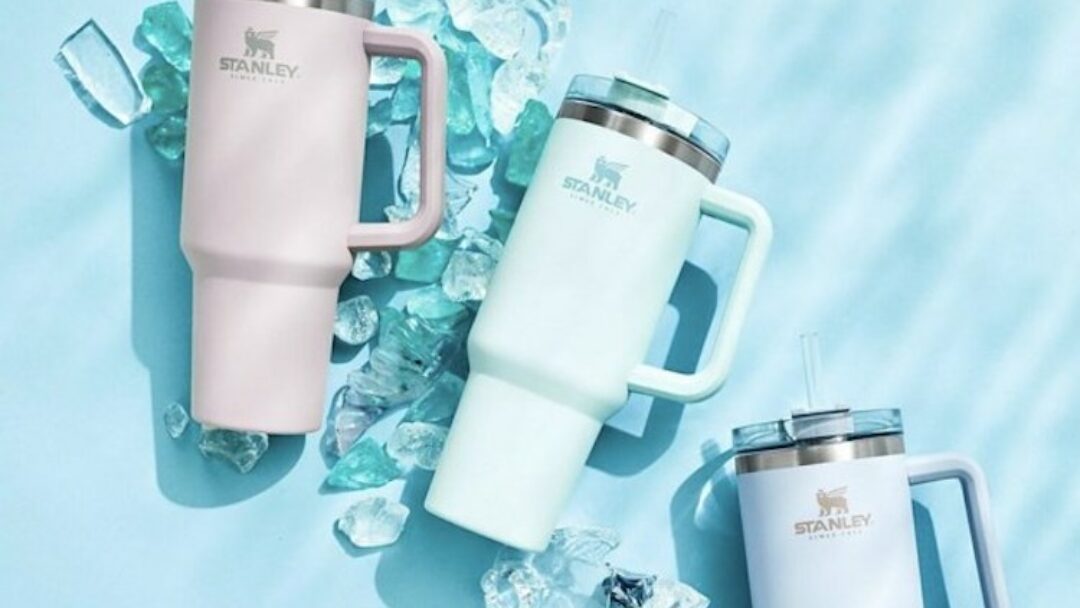For many, finding the perfect cup that can keep up with you while on the go is important. Lately, the Stanley Drink Cups have overwhelming increased their popularity and have risen to the high rank of most popular choices among Americans of all ages.. These innovative and durable cups have taken the market by storm, and it’s not hard to understand why.
Stanley Drink Cups have a rich history that dates back to 1913 when William Stanley Jr. invented the first all-steel vacuum bottle. This invention revolutionized the way people carried and consumed their beverages on the go. Since then, Stanley has continued to innovate and refine their products, creating a range of insulated drinkware that is both functional and stylish.
Why Stanley Drink Cups Have Become So Popular
The growing popularity of Stanley Drink Cups can be attributed to several factors. Firstly, their reputation for quality and reliability has made them a top choice for outdoor enthusiasts, campers, and adventurers. These cups are designed to withstand the toughest conditions, making them a reliable companion for any outdoor activity.
Stanley Drink Cups have gained a following among eco-conscious consumers. In a world where single-use plastics are increasingly scrutinized, Stanley offers a sustainable and eco-friendly alternative. By investing in a durable drink cup that can be used repeatedly, consumers can significantly reduce their environmental impact and contribute to a greener future.
Additionally, the stylish and sleek designs of Stanley Drink Cups have also contributed to their popularity. With a range of colors and finishes to choose from, these cups are not just functional but also make a fashion statement. Whether you’re sipping your morning coffee on your daily commute or enjoying a cold beverage at a picnic, you can do so in style with a Stanley Drink Cup.
Over the years, Stanley has introduced various improvements to their drink cups, including leak-proof lids, double-wall insulation, and durable materials that can withstand the toughest conditions. The company’s commitment to quality and craftsmanship has made them a trusted name in the industry, and their drink cups have become synonymous with durability and reliability.
One of the key reasons why Stanley Drink Cups have gained such popularity is their exceptional insulation. Whether you’re sipping hot coffee on a chilly morning or enjoying a cold beverage on a hot summer day, these cups will keep your drink at the perfect temperature for hours. The double-wall vacuum insulation technology ensures that your hot drinks stay hot for up to 7 hours and your cold drinks stay cold for up to 10 hours.
However, according to a recent surge of posts on social media platforms, there is now a rise in potential lead exposure through the use of Stanley cups. Allegedly, numerous Stanley customers are utilizing self-administered tests and reporting detection in the presence of lead in their Stanley merchandise. However, the outcomes seem to be inconsistent, as it is often unclear which part of the cup is being tested and the accuracy of the lead tests used.
At the base of every quencher produced by Stanley, there is a round barrier crafted from stainless steel. This barrier encloses a lead-containing pellet, as described by Stanley. The pellet serves to seal the product’s vacuum insulation, and can only be accessed if the stainless steel barrier is removed, which according to Stanley, is a rare occurrence.
According to the representative, the company stands by their products and has stated that all of their merchandise adheres to the regulatory standards set by the U.S.
Are there traces of lead in Stanley cups?
According to experts, there is a low risk of lead exposure from the liquid inside a Stanley mug as it does not come into contact with the pellet. However, if the circular cover becomes detached and a person touches the exposed lead before touching their mouth or nose, there is a potential for lead exposure.
In the early-to-mid 1900s, lead was extensively utilized in various products such as toys, gasoline, food, jewelry, cooking utensils, ceramics, electronics, batteries, plumbing pipes, paint, and cosmetics due to its affordability, durability, and resistance to rust.
The exposure of people to lead has been reduced with the assistance of federal and state laws. However, some products still contain lead. The Centers for Disease Control and Prevention (CDC) monitors recalls of products containing lead, including children’s clothing, food, cosmetics, and medicine. Lead poisoning is often considered to be a thing of the past. However, experts warn that lead is still present in our surroundings and can reach hazardous levels, causing significant harm.
The presence of lead in the bloodstream can result in serious health consequences such as cardiovascular disease and brain damage. Lead is a “toxin that affects all systems” and can harm various systems in the body, including the nervous, immune, and reproductive systems.
Should I dispose of my Stanley cup because of this?
According to experts, there is no danger in possessing the Stanely product as long as the cover on the bottom of your Stanley cup remains secure. If the barrier remains undamaged, there is no possibility of lead exposure or adverse consequences. Furthermore, the likelihood of being exposed to lead through one instance of touching it “is relatively low.”
To ensure that the cover of your Stanley cup remains in place, it is important to monitor the bottom of the cup. In the event that the cover becomes detached and reveals the lead seal, customers have the option to submit a claim for a replacement under the product’s lifetime warranty. To do so, they can visit the contact and warranty page on the Stanley website.
Do other tumblers with insulation contain lead?
Stanley is not the only company utilizing lead-containing pellets to seal their insulated cups. The type of pellet they use is considered to be the standard in the industry. It is recommended to examine bottles from different companies and beware of any damage or change to the bottle’s exposure.
According to CPSC, they closely watches over products like insulated tumblers to ensure that they do not violate lead regulations. Recently, they have issued recalls for several children’s products that contain accessible pellets with levels that exceed the federal lead content ban.
Individuals are urged to notify the CPSC at SaferProducts.Gov if they have any concerns regarding lead in products currently available for purchase.
How to Care for and Clean Your Stanley Drink Cup
To ensure that your Stanley Drink Cup remains in pristine condition and continues to perform at its best, it’s essential to follow proper care and cleaning instructions. The stainless steel construction of these cups makes them easy to clean and maintain.
After each use, it is recommended to hand wash your Stanley Drink Cup with warm, soapy water. Avoid using abrasive cleaners or scrub brushes that may damage the surface. To remove any lingering odors or stains, you can mix a solution of baking soda and warm water and let it sit in the cup for a few hours before rinsing thoroughly.
It’s important to note that Stanley Drink Cups are not dishwasher safe. The high temperatures and harsh detergents used in dishwashers can compromise the insulation and overall quality of the cup. Therefore, it’s best to stick to hand washing to ensure the longevity of your drink cup.








